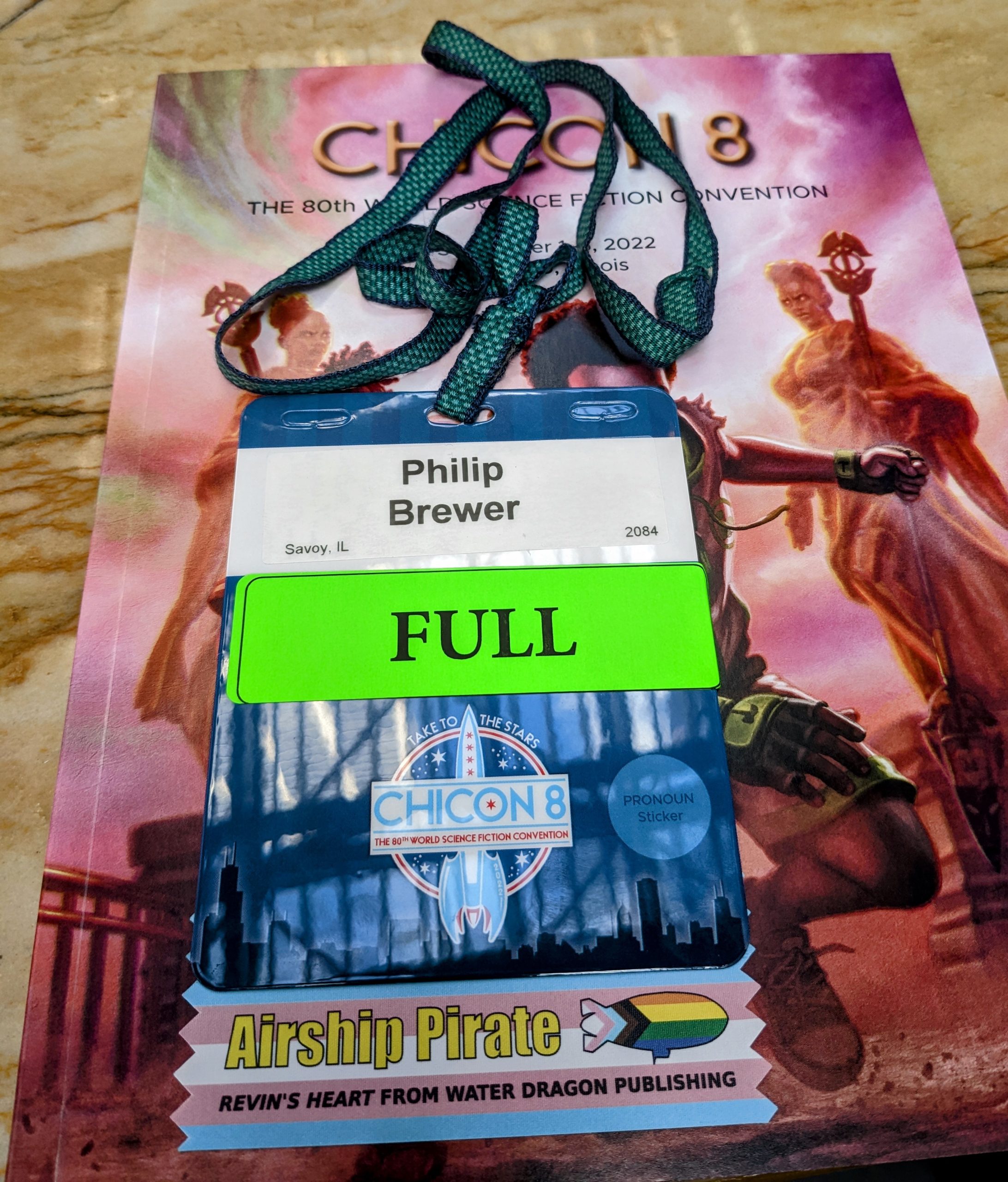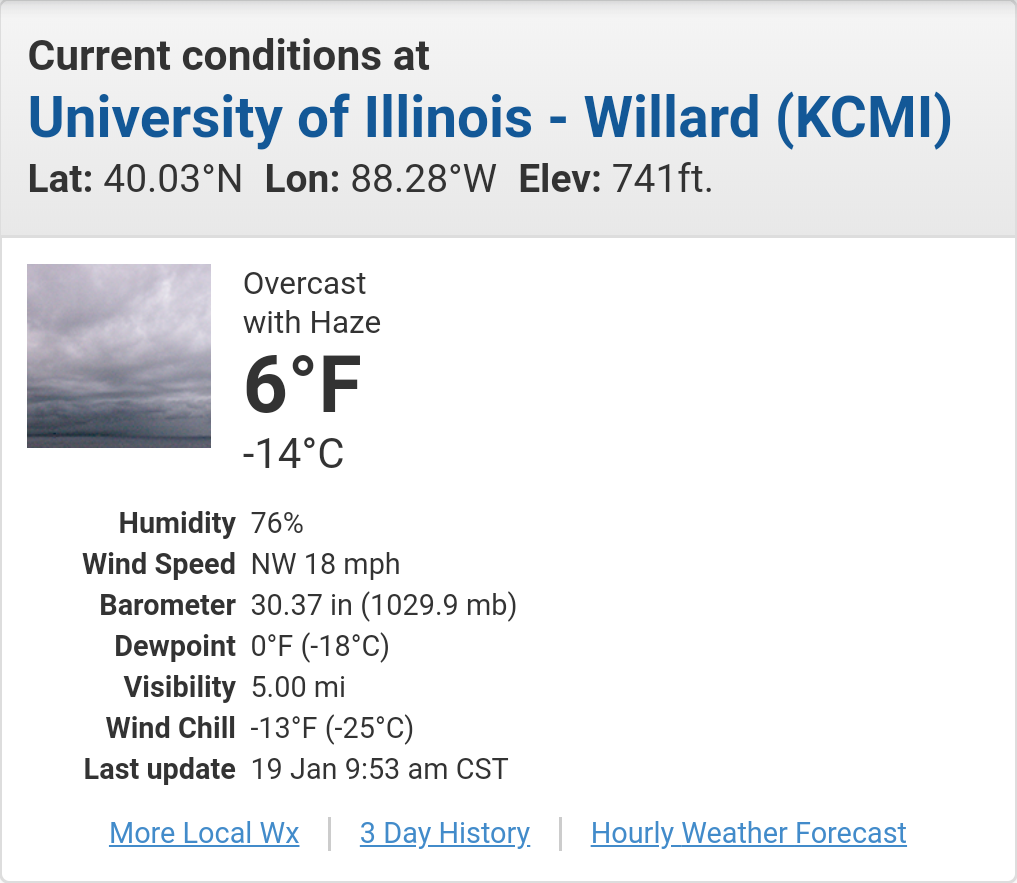Just a post to show off the Airship Pirate ribbon @limako made for me. Also shown: my lanyard: handwoven silk made by @jackieLbrewer.


Just a post to show off the Airship Pirate ribbon @limako made for me. Also shown: my lanyard: handwoven silk made by @jackieLbrewer.

Bummer. I’ve been hoping to find a old wool coat cheap at Goodwill or a vintage clothing shop, but they’re getting all trendy. What to wear to Davos…
Why couldn’t he find a coat that had the warmth and performance features of his ski jacket with the tailoring and design of his wool coat?
Source: The Norwegian Wool Coat

Jackie and I went out for a walk this morning, as we do. The double-digit negative windchill seemed to offer a bit in the way of bragging rights, even if it wasn’t nearly as cold as a year ago.

I’ve got a bit more in the way of clothing choices this year, having bought a bunch of cold weather gear for winter running, but I didn’t use much of the new stuff.
I wore my Alaska pipeline coat, of course. Under that I wore my Dale of Norway sweater that Barbara bought on her last trip to Antarctica. Under that I wore a silk mock-T base layer. For my lower body I wore my flannel-lined jeans, which were just the right weight by themselves. (I’ve got a pair of fleece-lined khakis a size larger, big enough to wear tights or something under, for when it’s really, really cold, but I didn’t need them today.) I wore silk sock liners under my usual wool/silk-blend socks, under my new waterproof Lems boulder boots. (I’m very pleased with these boots so far. All the minimal/barefoot features I want, waterproof, and warm enough for the bitter cold.)
The one imperfect thing about the Alaska pipeline coat is that the hood is hugely oversized (I assume so that it can go over a hardhat) and tends to slump down over my face, obstructing my vision. So to keep my head warm I wore the Khyber pass hat that Jackie made me. (If you remember the war in Afghanistan, the Northern Alliance forces wore the same sort of hat. Very versatile—roll it up and it covers the top of your head to keep the sun off. Roll it down and you’ve got a thick wool hat you can pull down over your ears.)
All of that, except the bolder boots, was pretty much what I was wearing a year ago in the picture above, but this year I had one novel item: I wore a buff over my neck and the lower half of my face. It’s just a thin layer of microfiber, but over my beard it was dramatically warmer than just the uncovered beard. I’ve had buffs for years, but I mostly wear them in hot weather (to keep the sun off my neck), so I think of them as cooling rather than warming. It was amazing to find how much of a difference it made just to put a layer over my beard.
It was on my first trip to England that I came to understand that what we think of as formal wear, business attire, and sports clothing was originally designed to be the most comfortable possible clothing for the circumstances. The circumstances in this case being the climate, technology, and infrastructure of England in the eighteenth and nineteenth century.
Without central heat interiors were going to be chilly, but even if you were quite frugal with your wood or coal they would not have to be really cold.
Given those indoor circumstances, and given that you had to make do with wool, silk, linen, and cotton (because there were no synthetic fibers), you would quite naturally end up with just the sort of garments that we now think of as being part of formal wear—wool coats and vests, silk bands to wrap around your neck, and so on. Sport clothing, of course, was for the sort of sports the English aristocracy engaged in: riding and shooting. Tweed and leather were very practical.
It seems obvious now, but it was something of a revelation to me. When I was younger, I always thought of that sort of clothing as being uncomfortable.
Partially that’s because such clothing is only really comfortable if it really fits. You don’t need a bespoke suit for it to fit correctly; even today good men’s clothing is routinely altered to fit. But clothing purchased for a child will never fit for long (and often never fit at all, because the child knows neither how the garment is supposed to fit nor how to articulate any issues discovered during the fitting).
Perhaps more important, such clothing is only comfortable in the sort of very cool environment for which it was originally designed. If your interior temperatures are around 60°F, you will be more comfortable in a wool coat over a wool vest than you would be in shirtsleeves. At 70°F it will be the other way around.
My attitudes toward such things has also been influenced by Jackie’s work with fiber. In my youth, my experience with wool was that it was scratchy, uncomfortable stuff (totally aside from it being made into garments that didn’t fit and were wrong for the climate). Now I’ve learned about the many different kinds of wool—starting with merino, of course, but by no means ending there—that are not scratchy. Now I have wonderful vests and sweaters, made to fit, from premium materials.
Of course, the top layers are really the last thing to think about. Comfortable clothing begins with the base layer. There again, my experiences as a child turned me against a whole very useful category: long underwear. Any clothing that you’re going to put another layer of clothing on top of needs to fit exactly right. An outer layer that’s too loose can be tolerated. But a too-loose under layer is going to get bunched up and shifted away from where it needs to be: Intolerable.
The ill-fitting hand-me-down long underwear I got as a child turned me against a whole category of garments that doubtless have an important role to play in comfortable dressing. I’m only now, more than two decades after returning to the Midwest, beginning to accumulate items for an appropriate cold-weather base layer. (I’ve made do up to now by having a wide range of top-layer options: spring jackets, fall jackets, winter coats, parkas, my Alaska pipeline coat.)
As a young man, I think I’d have been perfectly happy to wear nothing but shorts and t-shirts, and simply crank up the heat to make up the difference. My attitude has changed. If I had the money, I’d be very pleased to get and wear wool coats and vests, silk cravats, smoking jackets, and the like. Not because of the fashion statement they’d make (which would be a rather silly statement, however much I’ve come to appreciate a fine tweed), but because they’d be very comfortable.